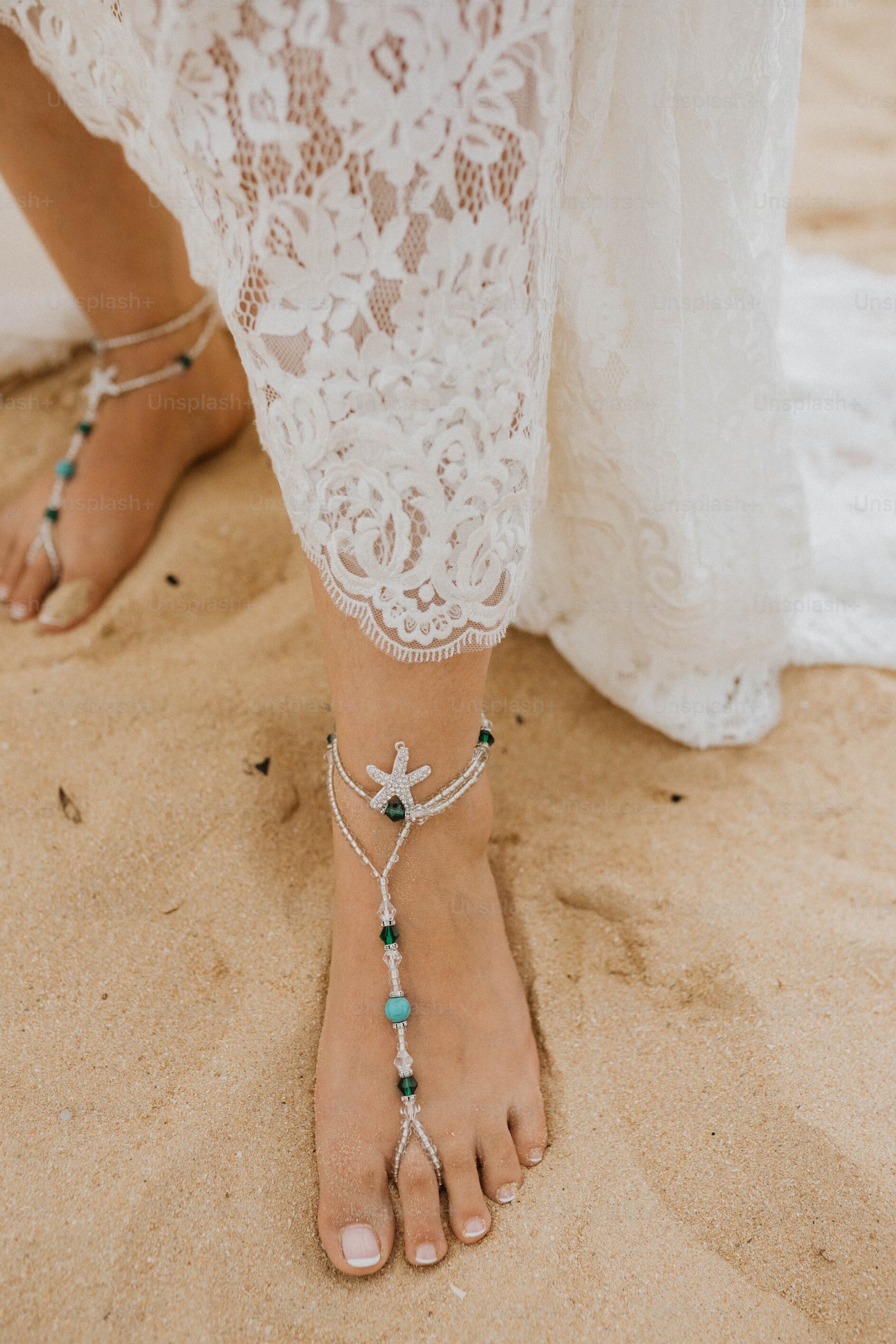Exposing the Tradition and Elegance: Indian Women's Anklets
A custom as old as time itself, the decorating of women's ankles with tiny anklets, is woven deep into India's rich cultural tapestry. Anklets have been a vital component of Indian culture for generations, representing femininity, grace, and beauty. They are also referred to as "payal" or "pajeb" in Hindi. This article explores the evolution, meaning, and fashions of women's anklets in India, demonstrating the nation's enduring love for this classic piece of jewelry.
The Tradition of Anklets in India:
Indian mythology, classical literature, and archeological finds all make references to the old custom of wearing anklets. Anklets are frequently connected to deities in Hindu mythology, such as Parvati and Laxmi, signifying their heavenly feminine elegance. Anklets have endured over the ages as a go-to piece for ladies in many parts of India, overcoming social and cultural divides.
Significance and Symbolism:
In Indian culture, anklets symbolize many facets of a woman's life and are highly valued. They are thought to accentuate the attractiveness of a woman's feet, which are regarded as fortunate and seductive. Anklets are also said to make melodic noises while a woman walks, representing happiness, prosperity, and marital love. Often at Indian weddings, the bride adorns her ankles with elaborately made anklets, which both symbolize her marital status and enhance the beauty of her bridal gown.
Styles and Varieties:
Women's anklets are available in a wide variety of styles, which are representative of India's rich cultural past. Traditional anklets are frequently made of priceless metals like gold and silver and embellished with gemstones, beads, and bells as well as complex designs and motifs. These anklets, which have been treasured treasures handed down through the years, represent cultural heritage and familial ties.
Modern anklets are made to fit changing fashion tastes and trends by including contemporary components in addition to conventional styles. Fashion designers and craftspeople explore with materials such as alloy, copper, and brass to make inexpensive, fashionable anklets. Women can express their uniqueness and sense of style with a wide range of alternatives available to them, from intricate statement pieces to minimalist designs.
Regional Variations:
Women's anklet regional variations represent India's rich cultural variety. Anklets are a fascinating part of India's cultural diversity, with each region showcasing its own style, craftsmanship, and symbolism. Women frequently wear "ghungroo" anklets, for instance, in North India. These anklets have tiny bells that tinkle melodiously with each step. Anklets called "nupur," which are normally made of silver and decorated with elaborate filigree work or temple designs, are called in South India.
The Evolution of Anklets in Modern India:
In modern India, anklets are now accepted as fashion statements by women of all ages and backgrounds, surpassing their historical significance as cultural artifacts. Anklet designs now combine traditional and modern aspects due to urbanization, globalization, and pop culture impact. Anklets give a dash of glitz and refinement to a variety of ensembles that women wear today, from western dresses and jeans to traditional sarees and lehengas.
Crafted by talented artists, handmade anklets have become more and more popular due to the growing interest in traditional crafts and artisanal skills. The demand for genuine, handcrafted anklets that pay homage to India's rich cultural legacy and promote regional artists and environmentally friendly business practices is rising among women.
Conclusion:
Indians have a particular place in their hearts for women's anklets, which represent the nation's rich cultural legacy, customs, and craftsmanship. Anklets are a timeless fashion accessory that have inspired and mesmerized women throughout India, owing to their mythological origins and modern appeal. As we honor the grace and beauty of women's anklets, let us treasure this classic piece of jewelry as a representation of Indian culture's vibrant tapestry of femininity, grace, and enduring tradition.

